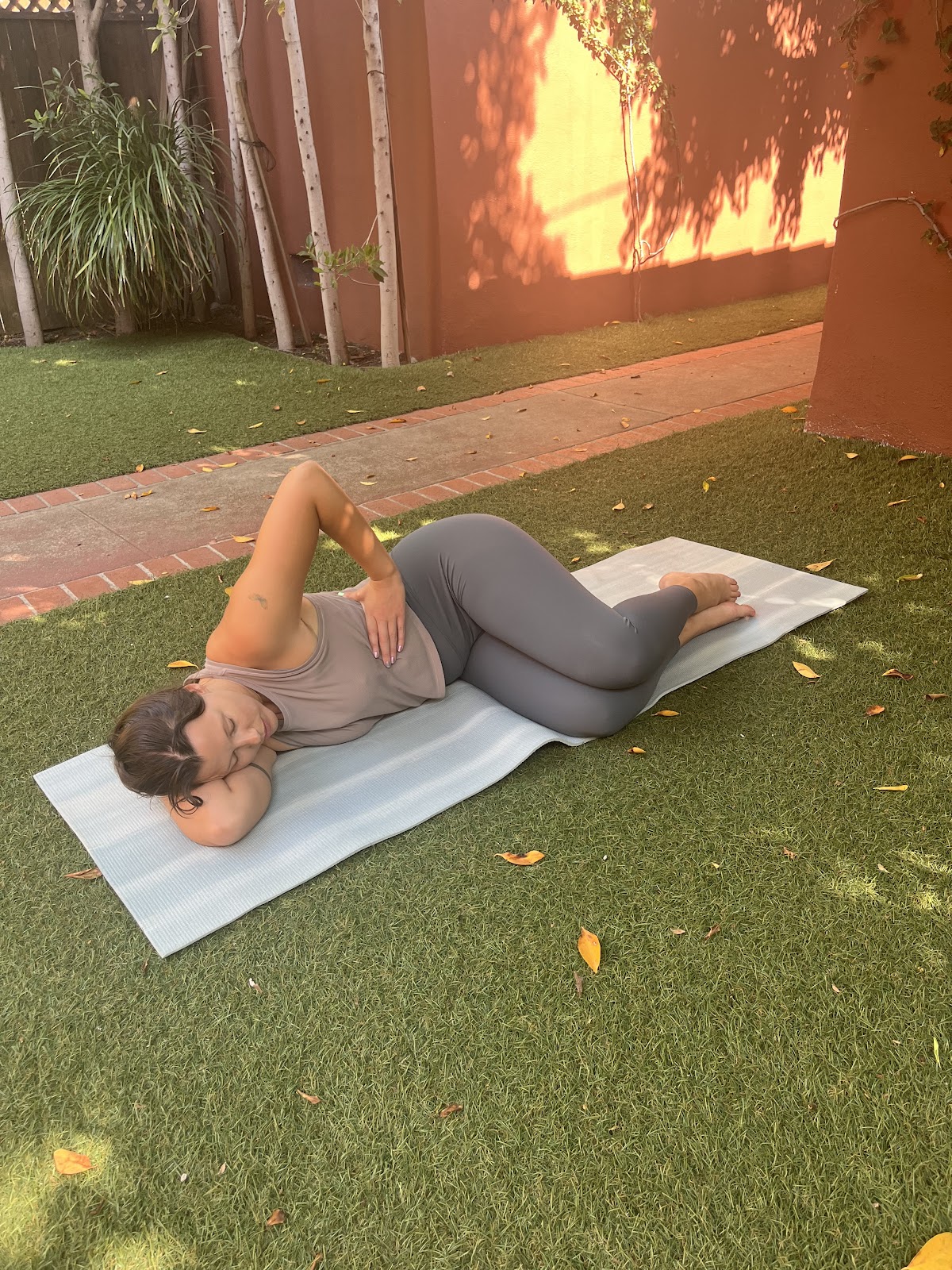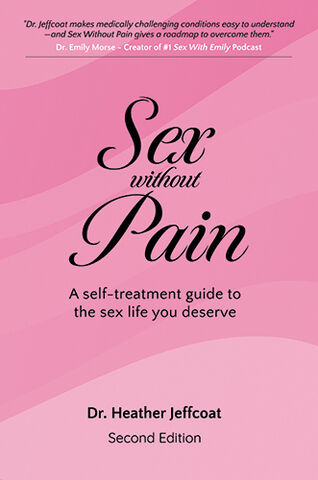
The Femina Physical Therapy Blog
Featuring original articles by our staff about current events and trends
Explore our insightful blog articles on pelvic health, where we delve into essential topics that empower and educate. From understanding pelvic floor disorders to strategies for conquering infertility, our content is designed for those seeking knowledge and support. We discuss the latest research, expert advice, and practical tips to enhance your well-being and foster a deeper connection to your body.
Featured From the Blog:
Postpartum Sexuality & Mood Changes in Women with Pelvic Girdle Pain

Does my pelvic girdle pain have anything to do with my mood and sexuality?
Many of our patients experience sexual dysfunction and anxiety, depression and chronic pain. These conditions are known to coexist, and we unpack each component of pain, mood and one’s behaviors, desires and attitudes related to sex and physical intimacy.
Pelvic girdle pain is defined as “pain between the posterior iliac crests and gluteal folds particularly in the vicinity of the sacroiliac joint” (Simonds). More simply stated: in the very low area of your back and buttock. Pelvic girdle pain is common postpartum and may impact disability in the fourth trimester. Many are aware of peripartum symptoms such as low back pain, incontinence, pelvic organ prolapse, pain with intercourse, and postpartum depression. Knowing that many women experience pain during and after pregnancy - what can we learn about the effects of pelvic girdle pain? Specifically, what impact does pelvic girdle pain have on symptoms of mood and sexuality?
Read more: Postpartum Sexuality & Mood Changes in Women with Pelvic...
Restorative 20 Minute Home Yoga Practice For Chronic Pelvic Pain

Yoga Practice For Chronic Pelvic Pain Can Be a Very Helpful Routine
As stated in my last blog post, yoga can be so beneficial as a pain management tool due to its ability to modulate the sympathetic nervous system3,4 which plays a large role in chronic pain. The exact mechanism of how yoga helps with chronic pain is still being studied, however, it is reasonable to believe the full body relaxation promoted by a yoga practice helps to decrease tension in key muscle groups- including the hips and pelvic floor which are often tight in people with chronic pelvic pain.
Currently, evidence has mostly focused on one hour long practices as an intervention, although there are some studies that report improvements in pain with shorter practices, such as the routine below. As with any mobility/stretching routine, benefits will be seen with more frequent practice, however even twice weekly can help decrease pain.
Read more: Restorative 20 Minute Home Yoga Practice For Chronic...
Vulvovaginal Moisturizers: Who Needs One & Choosing the Right One

Choosing the Right Vulvovaginal Moisturizer
Assuming you need one, make sure it's got the right ingredient list
There are many reasons why those born with female anatomy may require the use of a vulvovaginal moisturizer throughout their lifetime. As you age, the vaginal and vulvar tissues tend to become drier and less elastic. This change is typically seen around the time one goes through menopause due to the drop in estrogen that occurs. The vulvovaginal tissues are very sensitive to hormonal changes and estrogen is the hormone that controls vaginal lubrication, as well as tissue elasticity and thickness.
Read more: Vulvovaginal Moisturizers: Who Needs One & Choosing the...
- Details
- Written by: Staff
- 11129 Views

Did you know that when you sing you are not only using your vocal chords, but also the lungs, the diaphragm, the abdominal muscles, and also the pelvic floor?
It’s no surprise that the body is all connected, as in it’s one whole unit, but it’s easy to forget that an activity like singing is a dynamic and complex way we use our bodies. In a 2018 literature review, voice researchers Emerich Gordon & Reed refer to this YouTube video by osteopathic practitioner Roger Fiammetti which beautifully shows how the simple act of breathing involves not just the lungs, but the muscular system from the face and neck down to the bottom of our pelvic floor and the perineum, the video also outlines how the body has four diaphragms which help regulate air and fluid pressure throughout the body.
In fact, look at the structural similarities of the vocal chords and the pelvic floor:
- Details
- Written by: Heather Jeffcoat, DPT
- 13528 Views

You feel it coming, but you can’t stop it; that twitch in your pelvic floor perfectly timed to your sudden cough or sneeze, or the confirmation you’ve pushed that pigeon pose a little too far. Stress Urinary Incontinence (SUI) – involuntary leakage that occurs with increases in intra-abdominal pressure – is one of the more frustrating and embarrassing hallmarks of womanhood, the inescapable tradeoff for motherhood or a satisfying workout.
Read more: Stress Urinary Incontinence – It May Be All In The Hips
- Details
- Written by: Staff
- 19415 Views

Studies have shown that mindfulness can improve your sex life by increasing arousal, reducing sexual pain, lowering judgement, improving relationship satisfaction, and improving self esteem. Those of you who have had sessions with me in the clinic have most definitely practiced some forms of mindfulneses meditation with me, as it helps one increase connection between the brain and body, reduce anxiety, and downregulate the nervous system.
What is Mindfulness?
Mindfulness can be defined as an open or a receptive attention to and awareness of what is taking place, both internally and externally, in the present moment (Barnes et al., 2007).
- Details
- Written by: Heather Jeffcoat, DPT
- 7430 Views

Mindfulness Is More Than A Mindset
From bullet journals to hot yoga, and five minute breathing exercises to weekend meditation retreats, mindfulness is the hashtag-goals wellness buzzword of the moment… and rightly so. It’s hard to argue with all the documented health benefits of being fully present in your activities and relationships.
But is mindfulness a magic cure for painful sex? That’s what many of my patients have been told by well-meaning friends, partners, and even medical practitioners and professional counselors. And I’ll tell you what I tell them:
The pain isn’t in your head; it’s in your muscles. It’s in your nervous system. It’s a complex interplay of the two in many cases.
- Details
- Written by: Staff
- 5035 Views

Physical Activity has Psychological and Physical Benefits
Studies have shown that physical activity has many physical and psychological benefits. Staying physically active can increase happiness (Wang et al., 2012), improve health (Lee and Skerrett, 2001), and enhance quality of life (Penedo and Dahn, 2005).
Getting Started with a Problem Can Be Hard but Mindfulness Can Help
Dishman and Buckworth (1996) found that it is common for adults to quit an exercise program within the first 6 months of starting it, which decreases the chance for folks to fully receive the benefits of an exercise program. One factor that has been identified as helping people stick with an exercise program is satisfaction with physical activity.
In 2016 Tsafou et al. (2016) found that a mindfulness practice while you are exercising can increase
Read more: Studies Show Mindfulness Can Help You Start and Stick with...
- Details
- Written by: Staff
- 26494 Views

Cycling has become an increasingly popular mode of exercise and transportation, and before COVID-19 cycling classes were very popular.
Now with many cities under shelter in place ordinances, folks are dusting off their bicycles and riding the streets for exercise.
There are many health benefits to cycling, including improved cardiovascular health, better weight control, and decreased risk of breast cancer in women (Greenberg, 2019).
Despite all these amazing health benefits (I, myself am an avid bicyclist), you can ask almost anyone who has ridden a bike- the seats can get kind of uncomfortable after prolonged periods of time. And for some, issues worse than discomfort can arise: genital numbness, genital pain, nerve conduction issues, and sexual dysfunction. Through the years there has been some research that has linked bicycle riding, genital pain and genital numbness, and sexual dysfunction in both sexes. In fact, we’ve explored how rider/seat positioning on your bicycle can exacerbate nerve and orthopedic issues in past blogs.
Read more: Is Riding Your Bike Giving You Pelvic Floor Issues? Female...
- Details
- Written by: Staff
- 5589 Views

A 2019 study by Towe et al., found that certain medical issues including metabolic syndrome, obesity, and eating disorders have an effect on female sexuality. The study also found evidence that incorporating of healthy dietary patterns into everyday life may positively influence female sexuality.
Metabolic Syndrome and Obesity May Cause Female Sexual Dysfunction
According to the Mayo Clinic, Metabolic Syndrome is a “cluster of conditions that increase the risk of heart disease, stroke, and diabetes. Metabolic syndrome includes high blood pressure, high blood sugar, excess body fat around the waist, and abnormal cholesterol levels. The syndrome increases a person's risk for heart attack and stroke.” Those with Metabolic Syndrome often have apple or pear shaped bodies.
Read more: Studies Find Connection Between Diet and Sexual Function
- Details
- Written by: Staff
- 94791 Views

When it Comes to Sex With a Hip Impingement, Position Really Does Matter
It's no surprise that if you recently had hip surgery - or have an ongoing hip issue - that your sex life could suffer. Read on for some recommendations.
What is Femoroacetabular Impingement (FAI) Syndrome?
Femoroacetabular impingement (FAI) syndrome is a disorder of the hip that typically affects young adults. It is the result of an abnormal contact between the greater trochanter of the femur (thigh bone) and the acetabulum (the socket).












